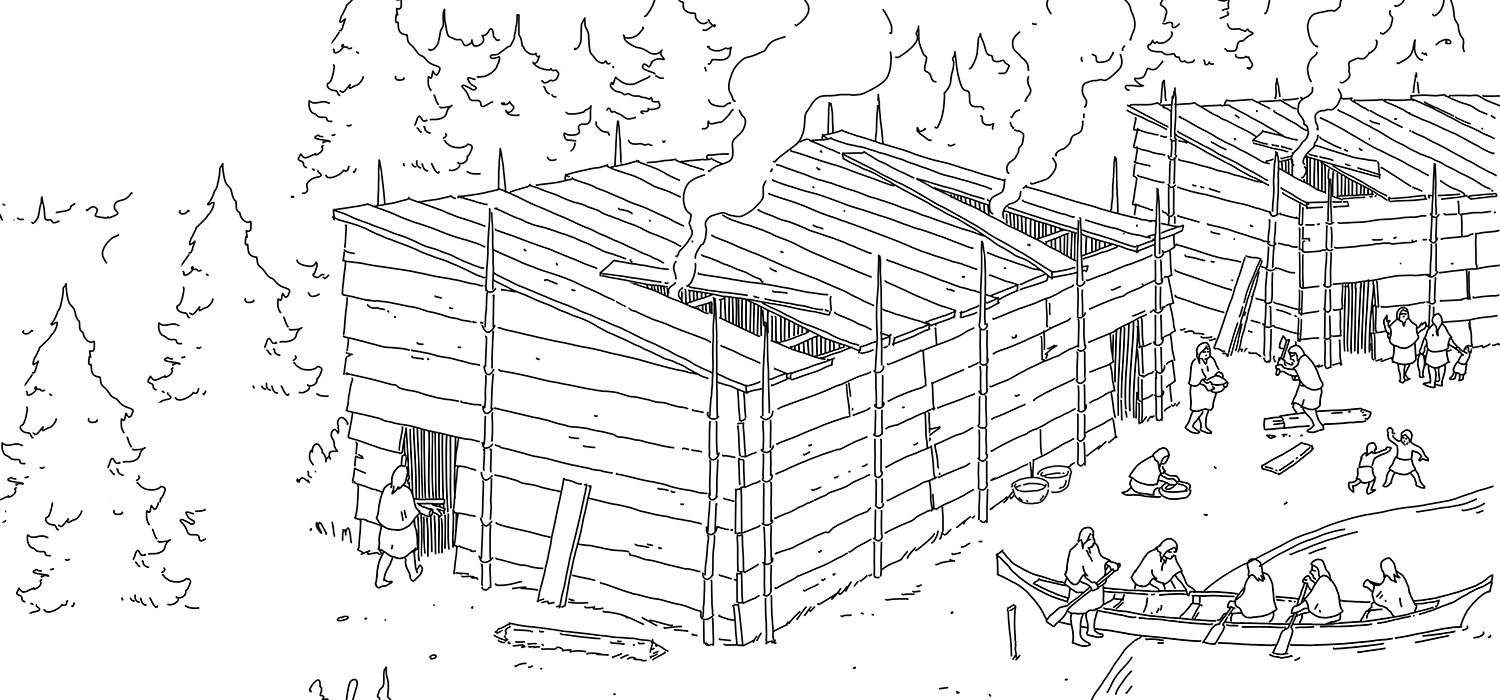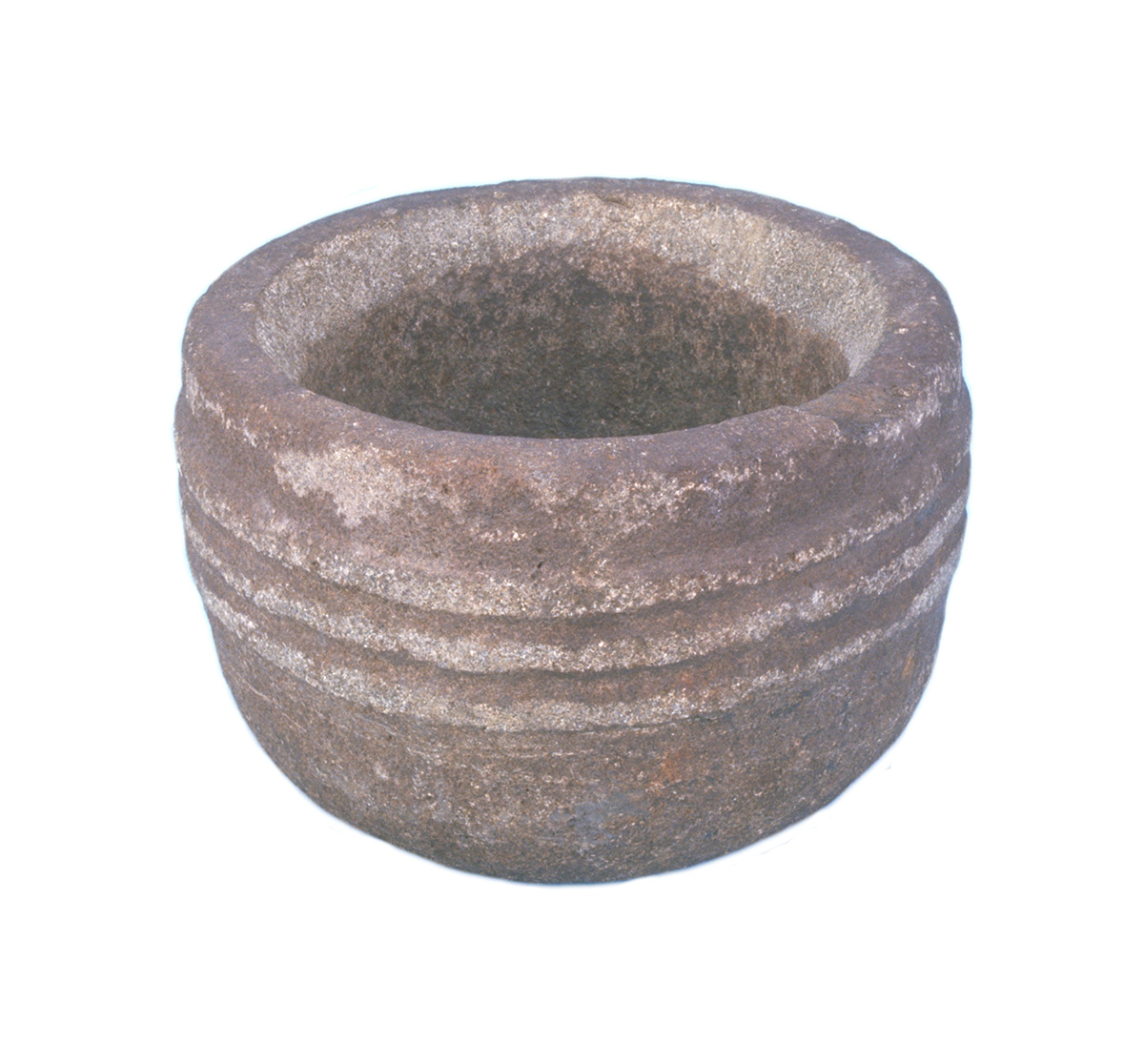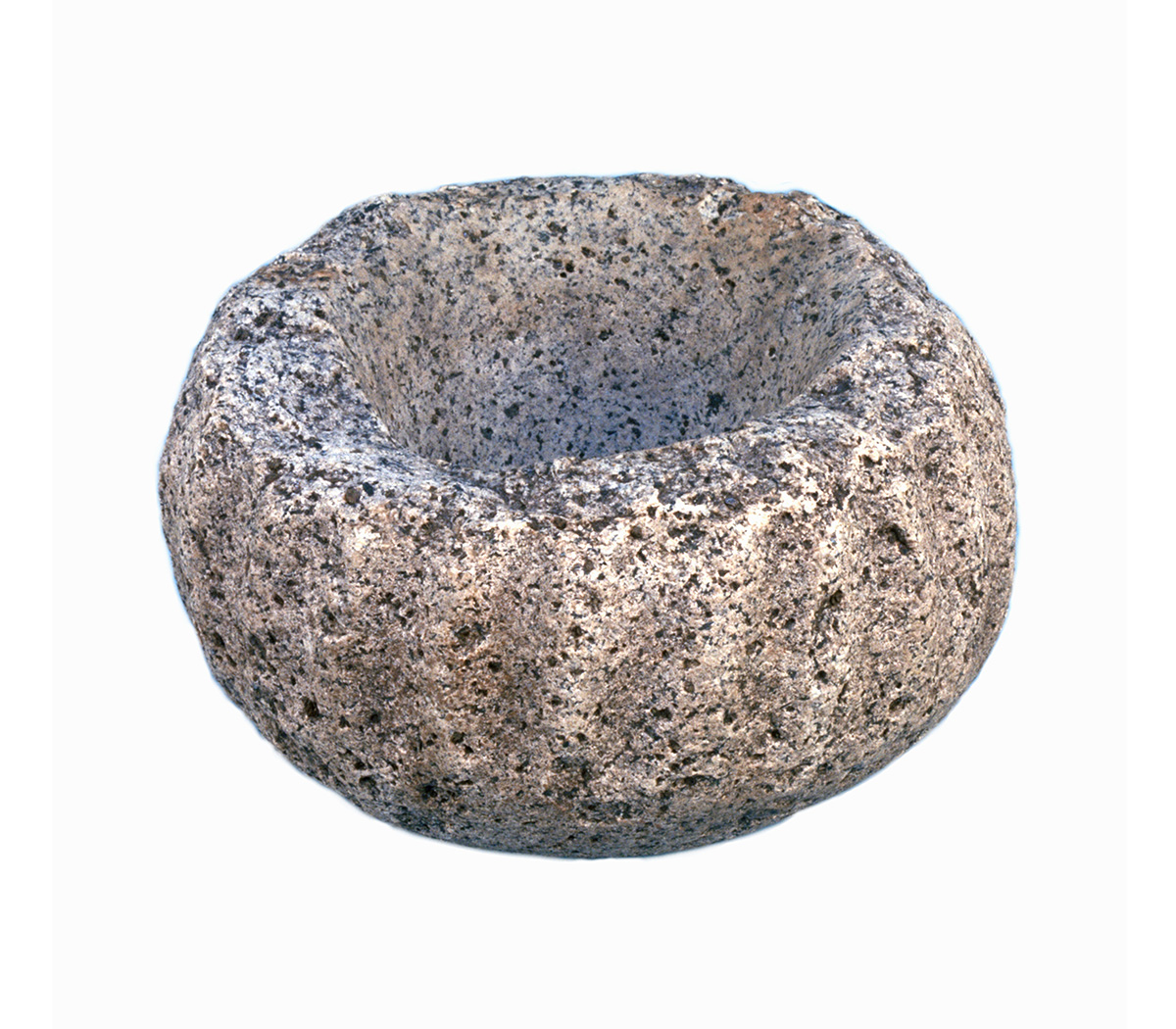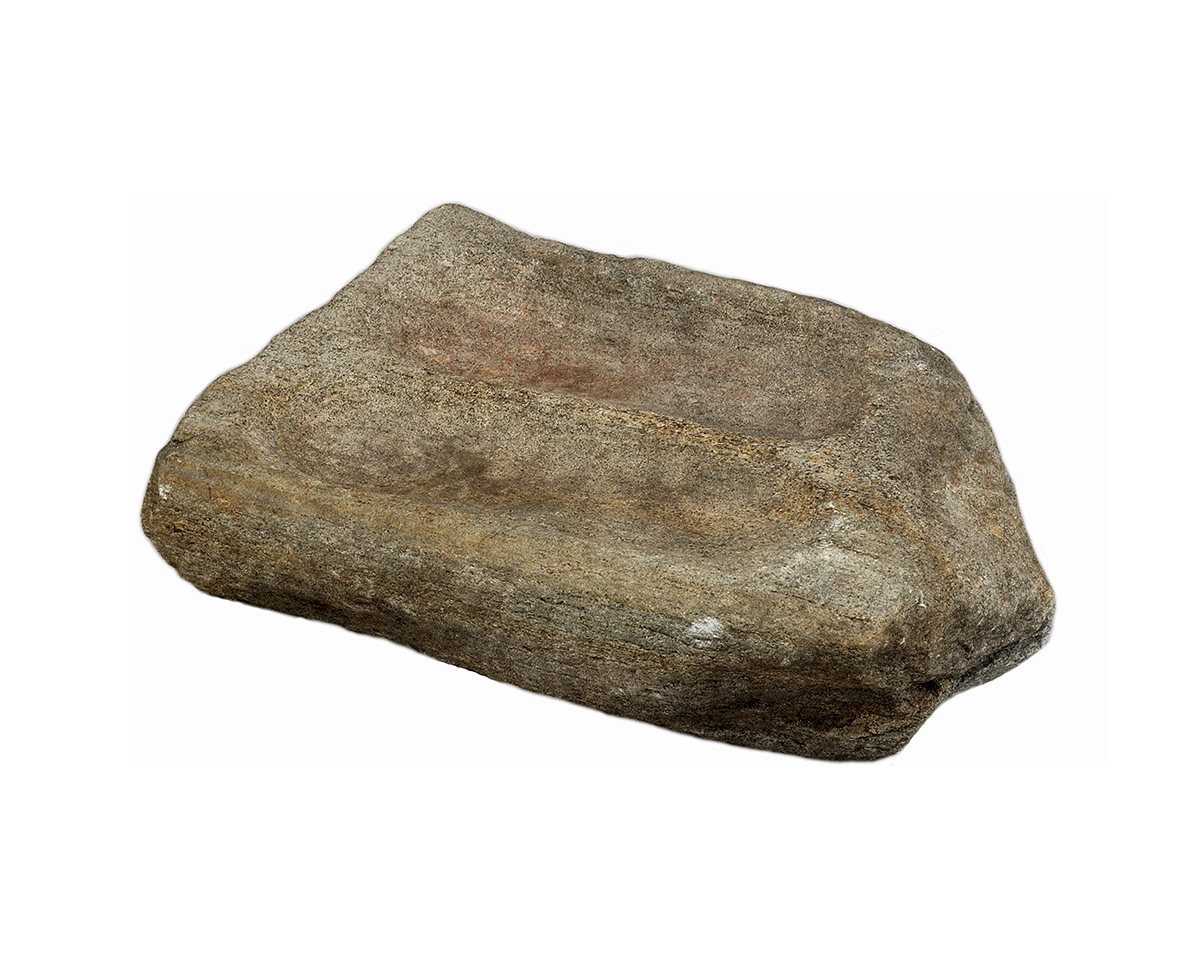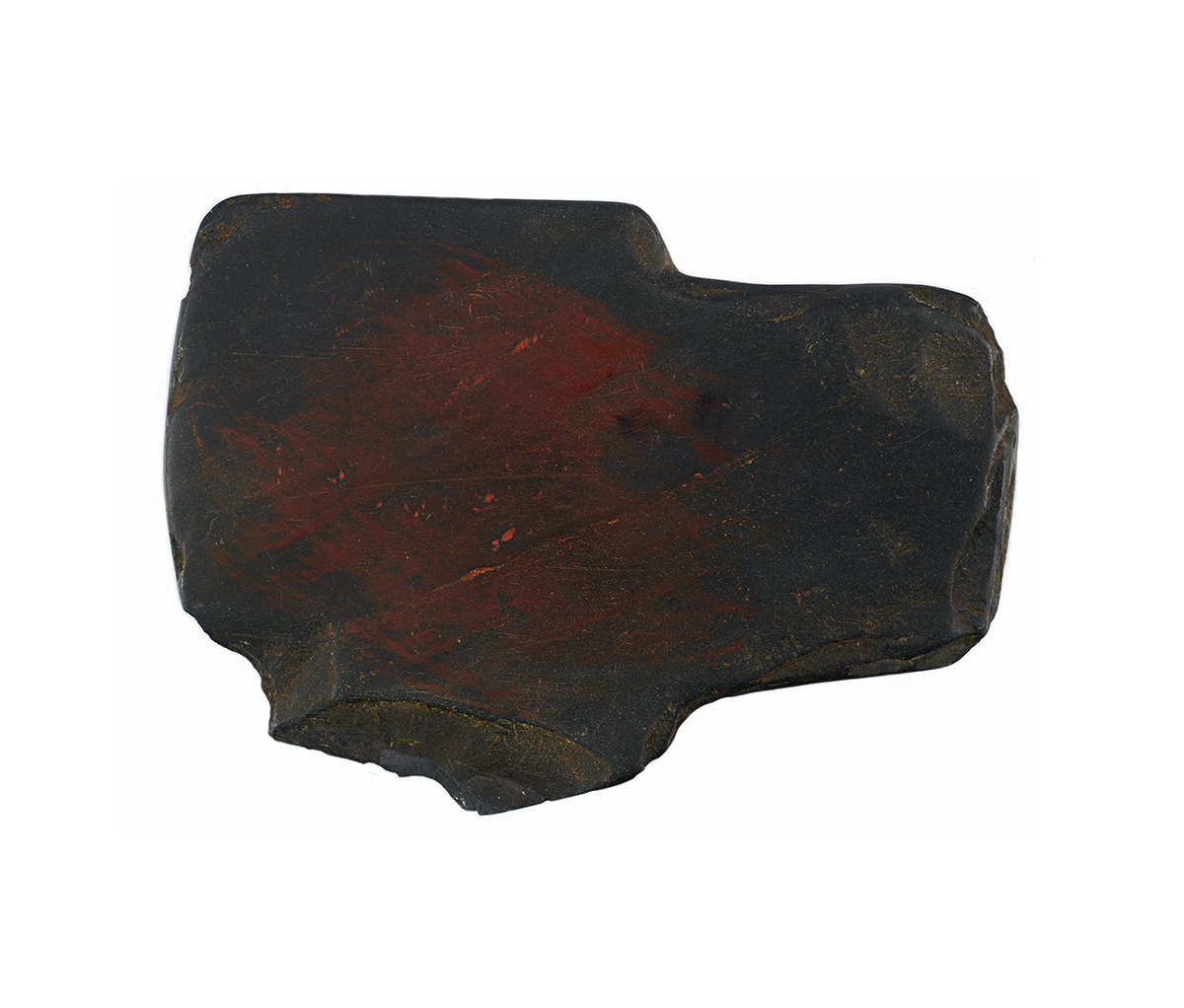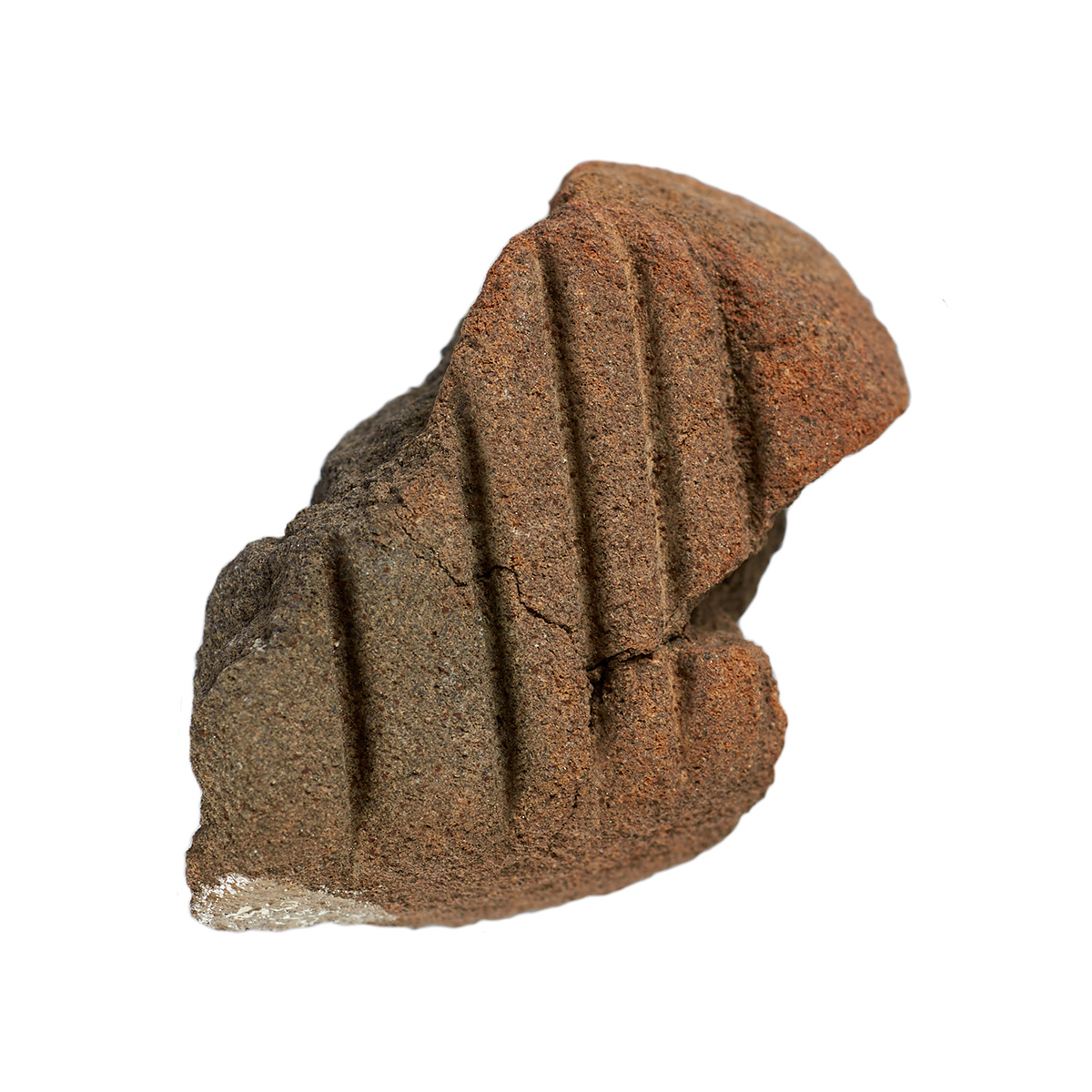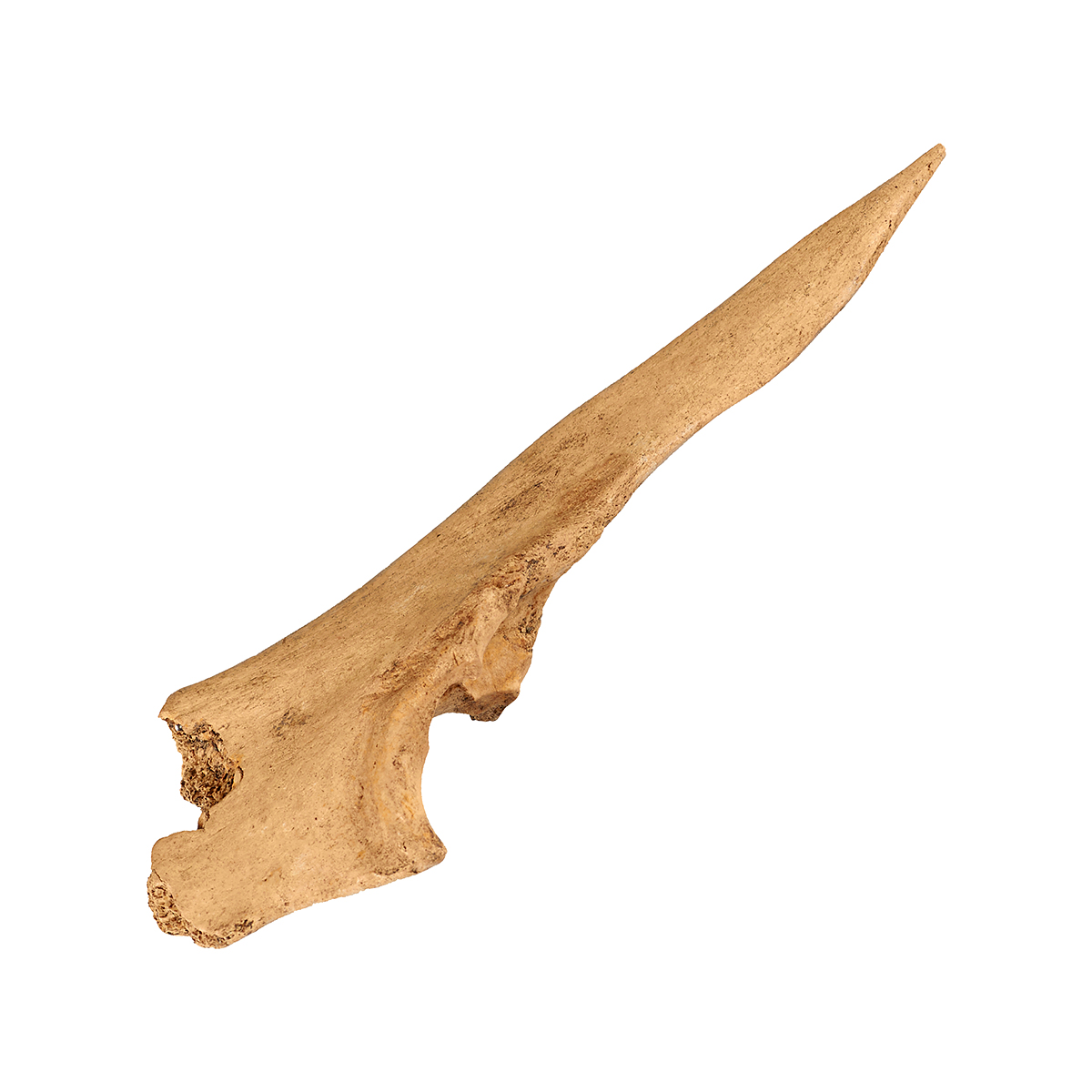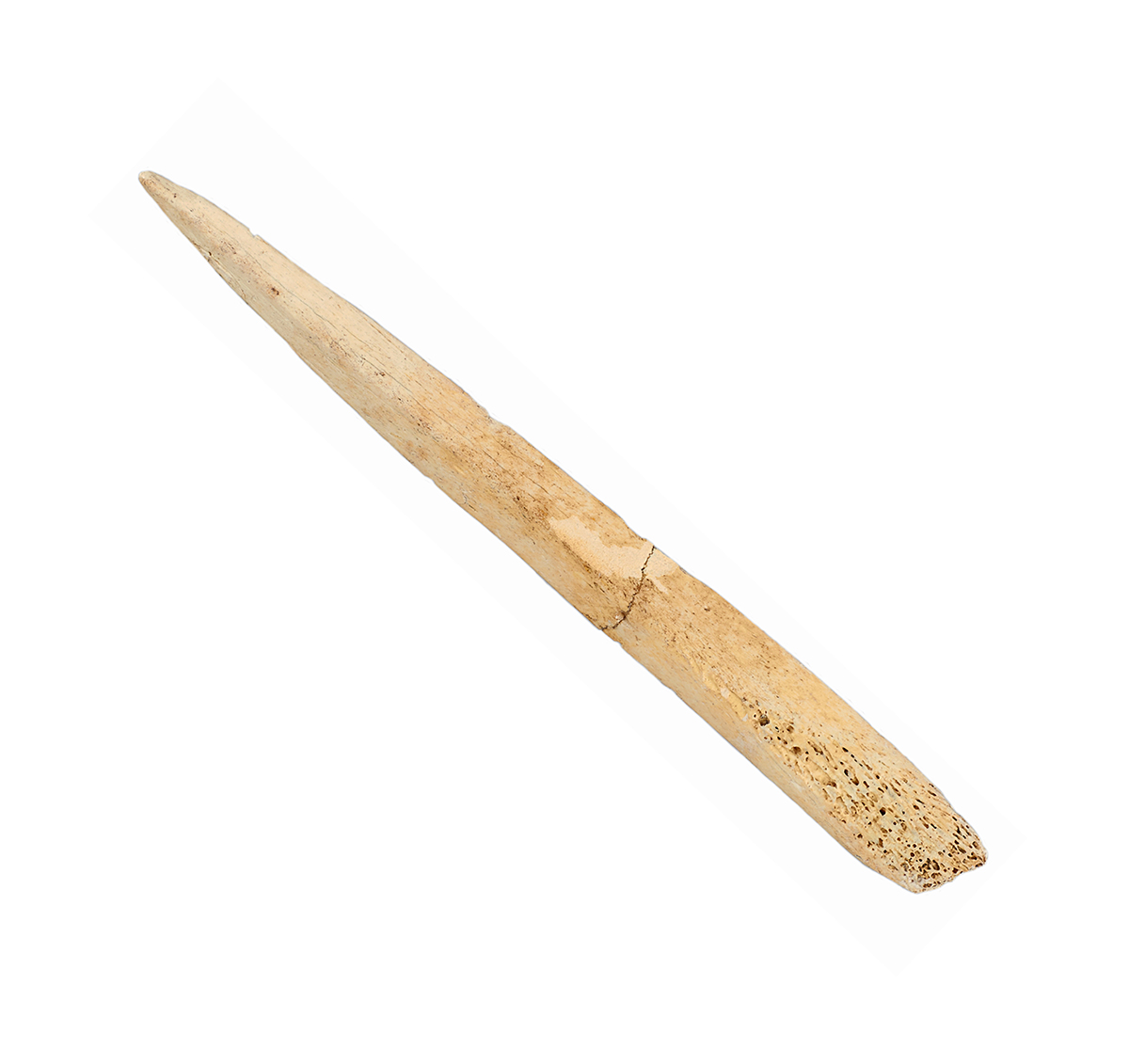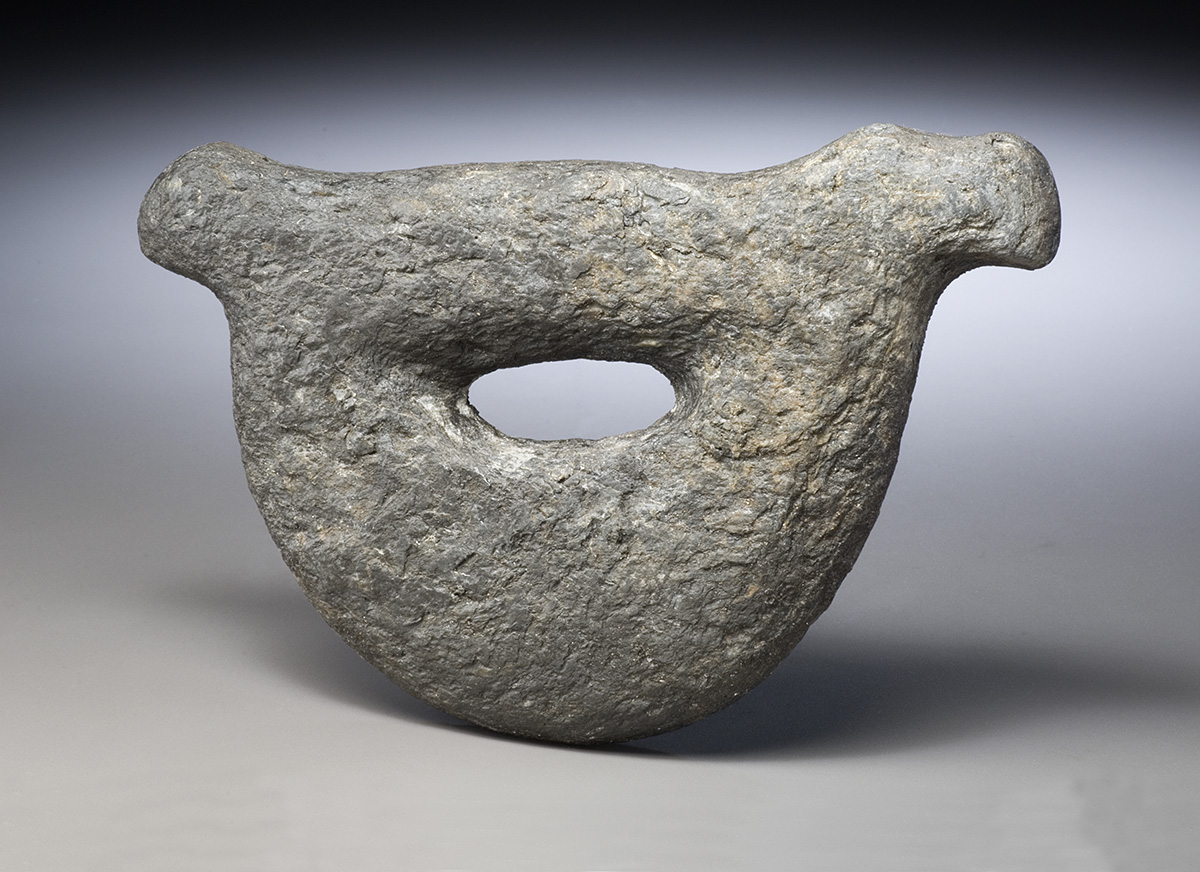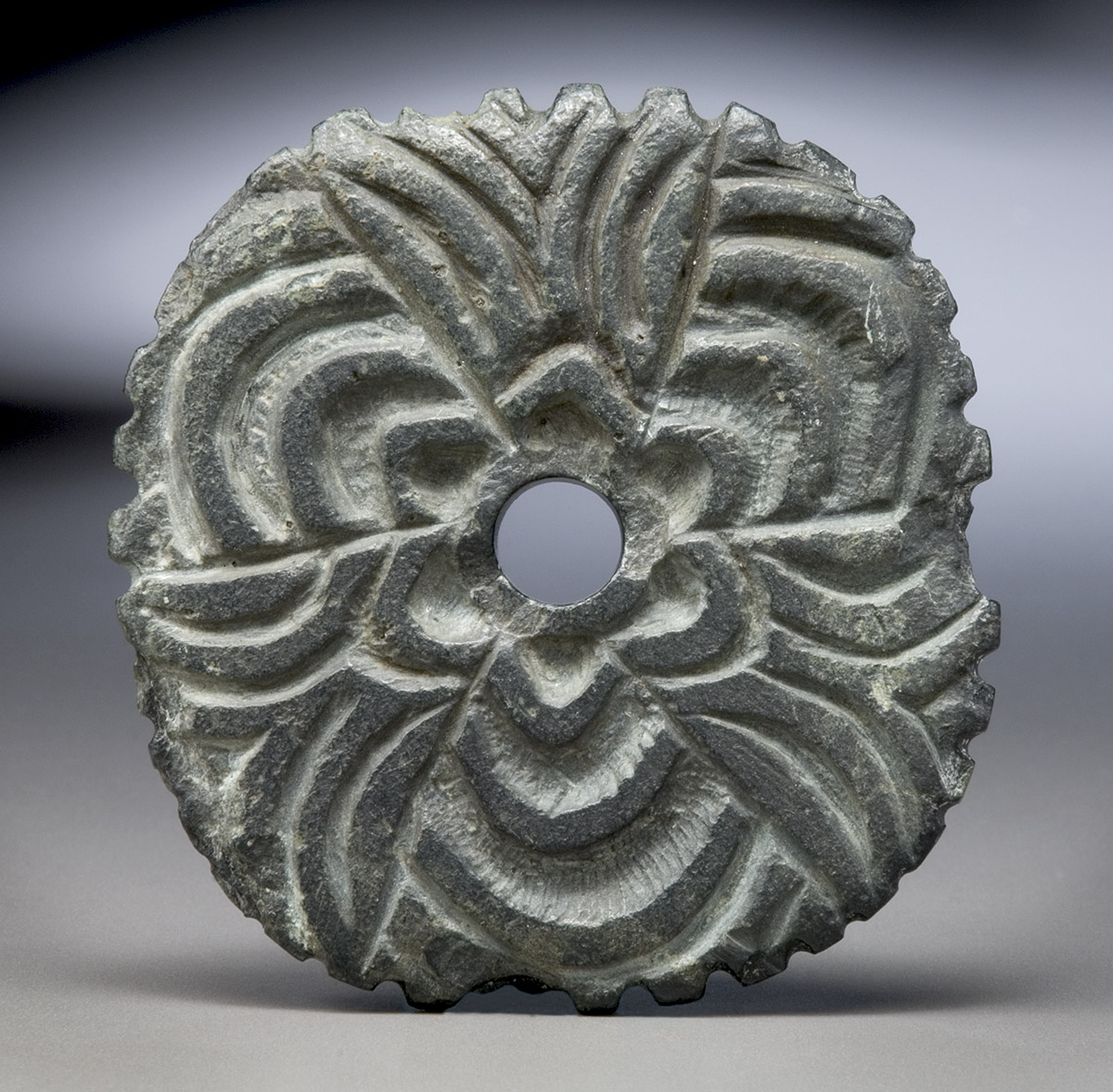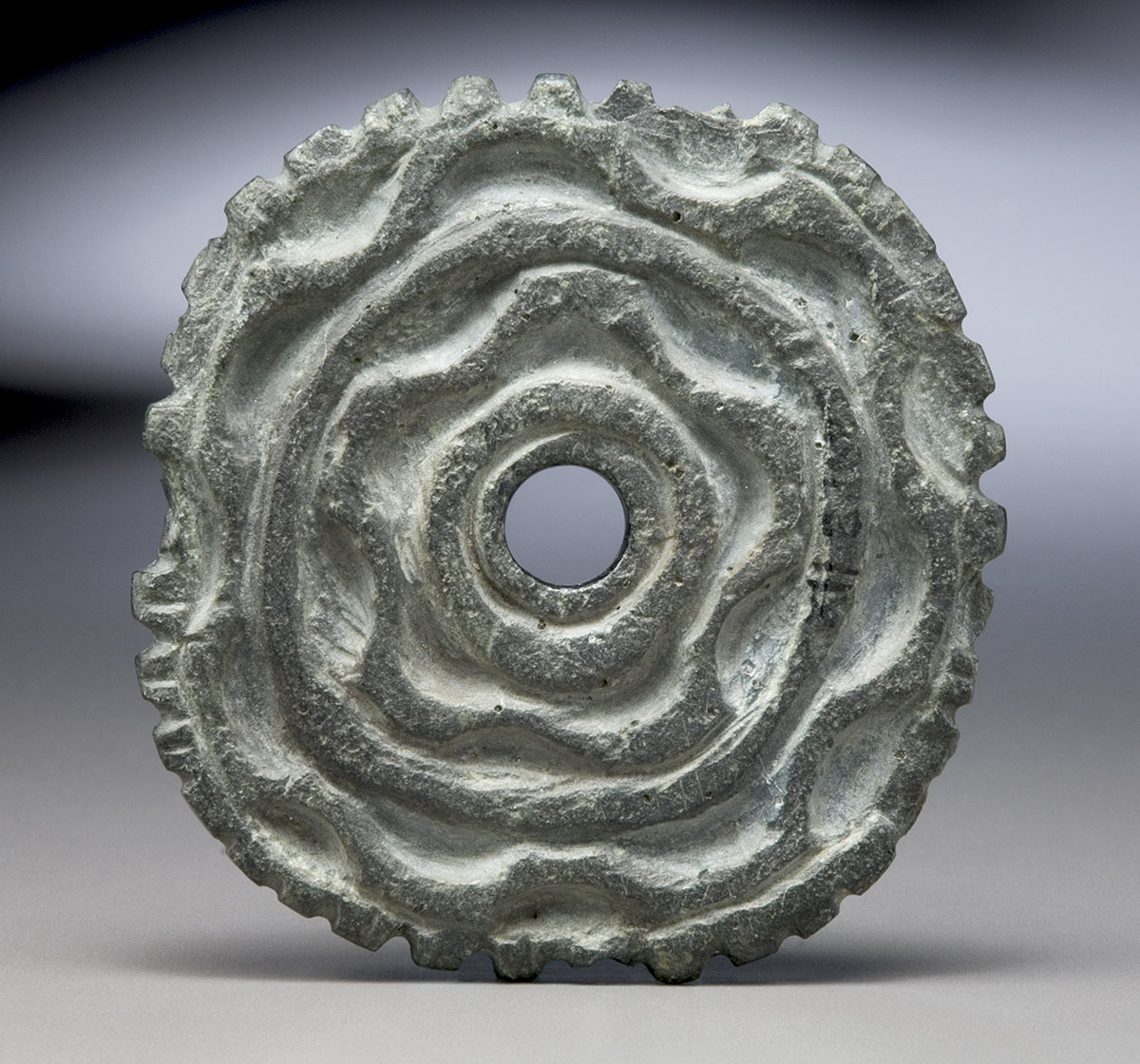On the West Coast, First Peoples created wealth from salmon fishing. Surpluses from the fishery supported large permanent villages led by powerful chiefs and their families.
Productive and stable salmon runs made year-round settlements possible as early as 7,000 years ago. Beginning 4,000 years ago, First Peoples began to build large permanent communal houses. Over time, individuals came to own the right to fish in the richest locales. Powerful chiefs controlled villages and the surpluses which enhanced their power. They redistributed their wealth to display their prestige and sustain their communities.
On the West Coast, First Peoples lived in large villages of plank houses. Archaeologists believe plank houses were first built about 4,000 years ago. Construction material came from enormous cedar trees that had been felled and split into planks with stone tools. Houses varied in size, but the largest could be over 100 metres long and shelter up to a hundred people. Elites, commoners and, sometimes, slaves from the same family lived together in one house. Each person occupied a particular space, depending on his or her status.
Painting on Cedar
Carved cedar and other types of wood were often elaborately painted. First Peoples ground minerals in a mortar and mixed them with fat on palettes to make colourful paint.
Textiles
Cedar bark could be cut and woven into mats and baskets. Softened with heavy tools, it was even made into clothing. Dog fur and goat hair were spun into yarn and rope.
Outside and Inside the Plank House
See what life was like outside and inside a West Coast plank house.

Outside a West Coast plank house

Inside a West Coast plank house
